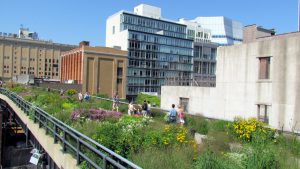“Biodiversity exists everywhere, even the smallest urban green spaces provide essential habitats for the most minute of species. If we manage to link those small spaces together, then the potential increases.”
.
We are connecting more and more with nature…
.
There has never been so much interest in nature – with people getting involved in all sorts of projects:
People urged to join summer nature count in churchyards – BelfastTelegraph.co.uk
.
Or with children getting involved:
Nature studies could soon be on the UK’s school curriculum | World Economic Forum
Science experiments that will make your kids’ curiosity bloom | National Geographic
Children and the natural world: Nature’s chance to nurture
.
The Sid Valley Biodiversity Group was set up last year to encourage us to connect with nature:
.
The VGS set up the Friends of Glen Goyle to encourage care of a charming natural corner of the Sid Valley:
Friends of Glen Goyle – A Vision Group for Sidmouth initiative
.
Encouraging people to connect with specific places full of wildlife and nature is happening more and more…
.
It’s happening at an urban planning level:
Green Corridors – Essential urban walking and natural infrastructure –
Urban green networks, corridors and linkages – Forest Research
Green Infrastructure | NatureScot
.
And it’s happening here and now:
The Citizen Gardener: Green corridors – Hackney Citizen
Green spaces aren’t just for nature – they boost our mental health too | New Scientist
National Trust for Scotland makes green corridors plea in Holyrood manifesto | The National
.
The Guardian earlier this week looked at such projects happening in the States and Australia:
.
Rewilding our cities: beauty, biodiversity and the biophilic cities movement
As well as bringing beauty into urban environments, we know that people are healthier when they are connected to nature. Research also shows that crime rates decrease in areas with street trees and that property values increase…
The “Greener Places” framework, released by the government architect of New South Wales last year, outlines the many benefits of green infrastructure; from increased social interaction and inclusion to reduced flood risk and improved property values. A regenerative design approach, one that creates opportunities for people and nature to thrive together, is emerging as a way forward as is the biophilic cities movement that began in the US and is now present in Australia…
Biodiversity exists everywhere, even the smallest urban green spaces provide essential habitats for the most minute of species. If we manage to link those small spaces together, then the potential increases. Fortunately, we are seeing projects emerging in cities around the world that demonstrate the possibilities.
 High-profile projects like the Highline in New York City provide examples to cities elsewhere for how leftover spaces in cities can be completely transformed to connect both people and nature…
High-profile projects like the Highline in New York City provide examples to cities elsewhere for how leftover spaces in cities can be completely transformed to connect both people and nature…
Our cities in Australia are teeming with leftover spaces, from railway cuttings to car parks and abandoned industrial sites. All too often our busiest roads are hostile environments with little to no nature and our cities rooftops and plazas are hard surfaces that contribute to increased heat and polluted water runoff. The nature that we add does not just need to be trees, projects like Sydney’s Camperdown Commons, Perth City Farm or Melbourne’s SkyFarm demonstrate the opportunity to grow food in our cities while simultaneously growing community interaction and engagement…
The planned Green Spine project in Melbourne integrates nature as a defining design feature and the successful One Central Park project in Sydney provides a vibrant urban greening example that takes nature up from the ground plane on to its facade. A movement that demonstrates regenerative thinking is showing signs of emergence…
Fundamentally our relationship to nature is key to this change, we need to embrace nature in our everyday lives and act with the knowledge that whatever we do to nature, we do to ourselves.
.
image: High Line park NYC – Manhattan – New York City | High Line P… | Flickr